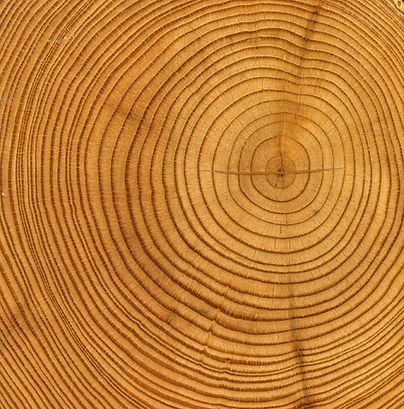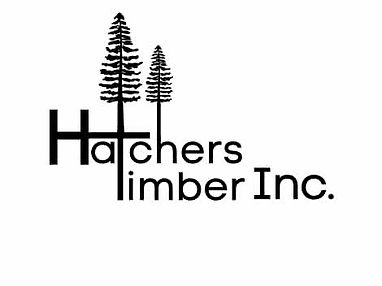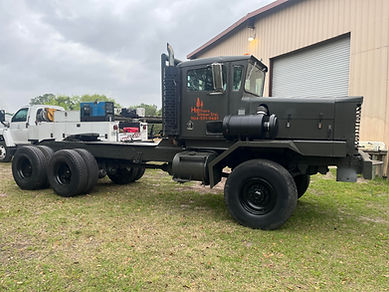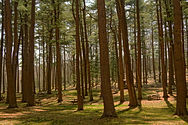

Timber procurement process


1
The Timber Cruise
The first step to developing a logging plan is to cruise the timber. While cruising timber our goal is to identify the following
-
Stand/property boundary lines
-
Stand density
-
Age and type of timber
-
Road access and loading ramp locations
After cruising your timber and identifying your goals we will submit our bid.
2
Contract/Logging Plan
Once our bid on a stand of timber has been accepted we will provide a written contract to the Landowner. The next step will be going over the logging plan which includes where we plan to start cutting and where we will ramp on the property.
3
Logging Begins
Now the logging can began! First we will move the buncher to start cutting out a ramp where we will load the trucks. Next the skidder and loader are moved in and we're ready to load our trucks and get your wood to the mill.

Timber Products
Chip N Saw (CNS)
A timber product that is between the size of pulpwood and sawtimber. The inner section of the log is used to make dimensional lumber such as 2x4s while the outer round portion is chipped. CNS has a maximum butt size of 18" must be at least twenty nine feet long and a minimum top of five inches.

Pulpwood
Pulpwood is used to make wood pulp for paper and other products. Pulpwood can have a maximum diameter of twenty seven inches at the mill, can be no shorter than fifteen feet, and have a minimum diameter of two inches. Pulpwood is not limited to the smaller diameter trees, it is also selected from larger trees that may have to many defects for saw mills. Tops from chip and saw & saw timber are also hauled for pulpwood by loading a trailer double-bunk.

Saw Timber
Saw Timber is generally made up of Timber with a DBH of fourteen inches or greater and is used to make dimensional lumber. These trees must be free of any large knots or disease that would affect the quality of lumber produced from them.

Poles
Select trees that are very straight and free of any defects can be hauled to a pole mill where they will be milled into light poles and fence post.

Hardwood
Hardwood is made up of different species of oaks and other broad-leaf trees. There is not much of a market for hardwood in north Florida besides mulch mills that will buy it. If the mills will buy it the main benefit of cutting hardwood is for site prep purposes to clear the way for planted pine.

Cypress
Cypress like hardwood is primarily hauled for mulch and the ability to harvest often depends on if the mills willingness to buy it or not.

Logging equipment
An overview on the equipment we use to harvest your timber.
Buncher
The buncher is the piece of equipment that is used to cut the timber. There are two types of wheeled feller bunchers, the saw head and the shear head. A saw head buncher has a large disk with saw teeth on it and can cut a larger diameter tree. The shear head is like a giant pair of hydraulic scissors that cuts the tree. The advantages of a shear head buncher is they burn far less fuel and can be used to clean vines off of trees as they don't have a saw disc spinning. Hatchers Timber has both a saw head and a shear head buncher.

Skidder
The skidder is used to retrieve the pulls of wood the buncher has cut and pull them to the loader. Along the way the skidder operator will back the trees through a limbing gate which will strip the trees of any remaining limbs. In wet conditions it is ideal to limit the amount of skid trails used to leave minimal rutts in the woods.

Loader
Once the skidder gets the pull of wood to the ramp the operator will drop the pull by the loader. The loader operator will then sort through the wood to ensure maximum return to the landowner. If loading CNS the loader operator will run the logs through the delimber making sure to get off any remaining limbs and saw the logs off at a 5" top. Once a tree is topped off to mill specifications it is loaded on the truck and hauled to the mill.

Spot truck
The Spot truck also known as the set-out truck or GI is a 6x6 truck used to haul the loads of logs from the ramp to a location on the tract that is accessible to the road trucks. Logging roads can get very muddy and slick or turn into sand beds, a spot truck is much more suited for these conditions and reduces where and tear on the road trucks. The use of a spot truck can increase production as trucks will not have to wait to be loaded when they arrive back in the woods.

Log Truck
The log truck is used to transport the loads of timber from the woods to the mills. Log trucks are not your typical semi truck as they are equipped with larger 46k locking rear ends to accommodate the heavy loads of timber they haul.

Logging Glossary
-
CNS - Chip N saw.
-
PW - Pulpwood
-
ST - Sawtimber
-
Double bunk - When a trailer is loaded in two sections with timber cut in 22' +/- lengths.
-
Ramp/Landing - This is where the loader is set up to load the trucks.
-
Knot - The base of a limb on the trunk of a tree.
-
Cat Face - Cat face trees have multiple scars and no bark where the sap was once harvested from the tree. These defects must be cut out as the mills will not take cat face trees.
-
DBH - Diameter at breast height
-
Butt - The base of the tree stem where it was cut off.
-
Stemwood - A load of wood loaded tree length.
